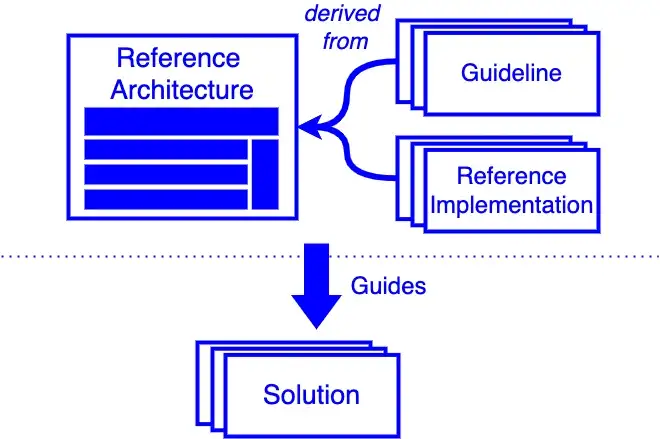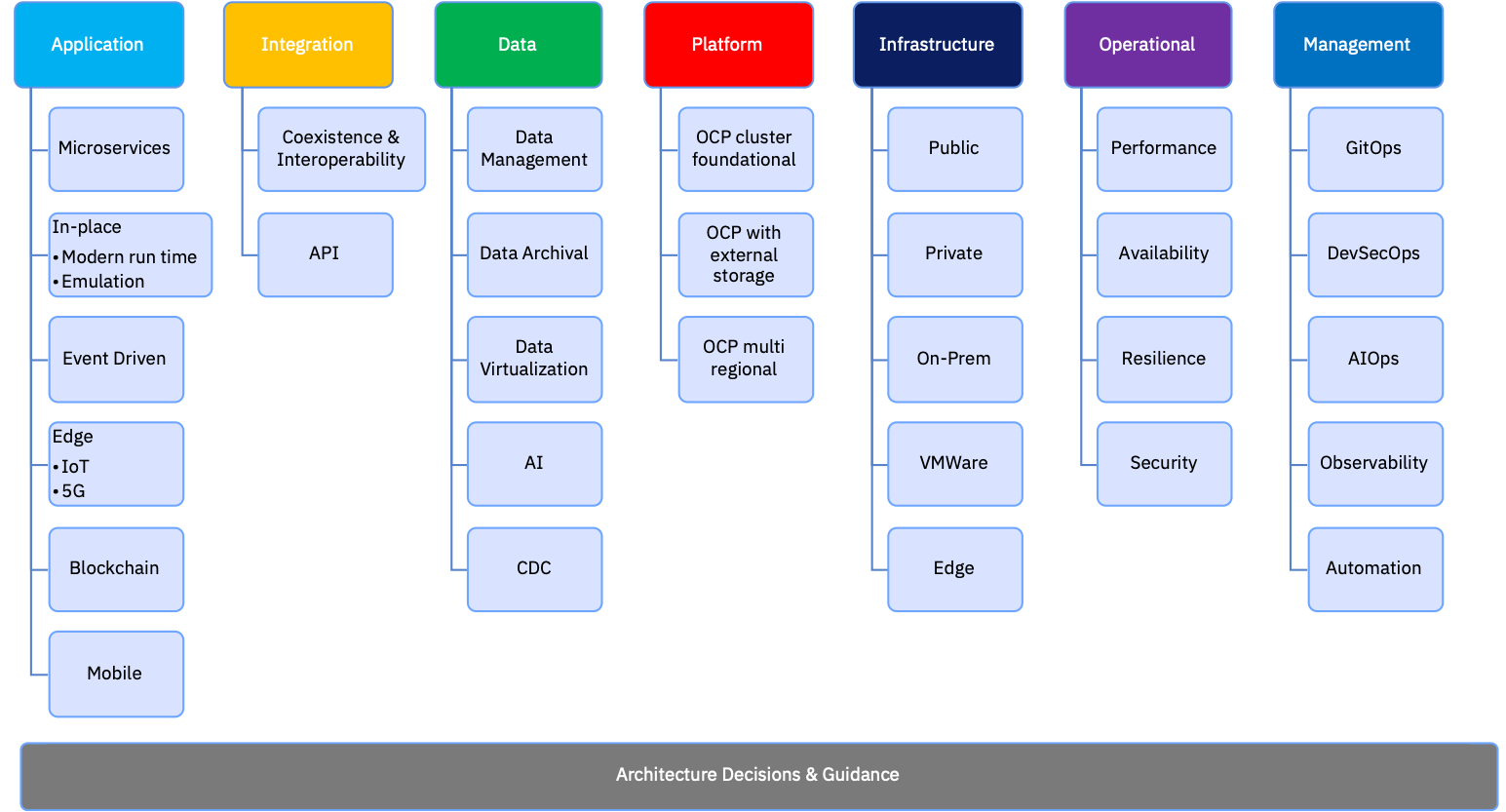OpenShift Implementation Patterns
Learn everything Implementation Patterns in OCP.
Let’s say you have a customer that needs to modernize their legacy workloads and development environments, for one reason or another. Regardless of whether that determination has already been made, or they have approached you with a problem statement that leads towards that solution. How do you proceed from the client’s problem state to the reference implementation? And then how do you convert that into a reference architecture, and finally your final Solution?
The questions being asked above represent a customer Journey, or Transformation Journey. This is a big-picture objective and is the focus of the eventual solution which will be proposed and implemented.
A Journey will consist of 1 or more Architecture Patterns, each of which enable the vision of the Journey.
Each Architecture Pattern generally consists of Implementation Patterns based on prior work. Of course, cutting-edge technologies may not have prior-work to base the patterns on, but there is generally some form of similar implementation.
Architecture Decisions (ADs) provide detailed overviews of various technologies which address a specific, common decision point in designing a solution.
Reference Implementations are similar to Implementation Patterns, but specific to distinct technologies. They provide accelerators for these technologies to enable their use in larger solutions. In some cases, this may be the smallest component in the Solution Lifecycle.

As you can see in the above image, Solution Architectures are guided by decisions made in Reference Architectures. But it does not show the rest of the cycle, where experiences from the solution redefine the underlying references.
A path forward representing the transformation of a particular objective.
Per the Patterns Drive Playbook:
Transformation themes enable logical grouping of the various transformation patterns, and align with the Experiential Architecture Journey approach.
The 5 Transformation Themes:
Learn more in the Patterns Space.
Patterns make up a considerable portion of solution architectures, especially within architecture-driven companies like IBM. Patterns are a repeatable set of items that lay groundwork for future work. These help to define best practices and enable future generations of architects to learn from prior work.
There are several important groups of Patterns within the domain of Solution Architecture. 2 overarching buckets are:
Architecture Patterns are a large grouping of patterns focused around solutioning new architectures. These include the following:

Implementation Patterns are a grouping of patterns focused around the implementation of technologies, frameworks, etc based upon prior work. These Patterns consist of a collection of Architecture Patterns and their related solutions to solve specific problems.
An example of an implementation to drive solutions for a Journey, as well as to reference back to for future work.
Learn everything Implementation Patterns in OCP.
Learn everything about Architectural Frameworks
Learn everything about Patterns